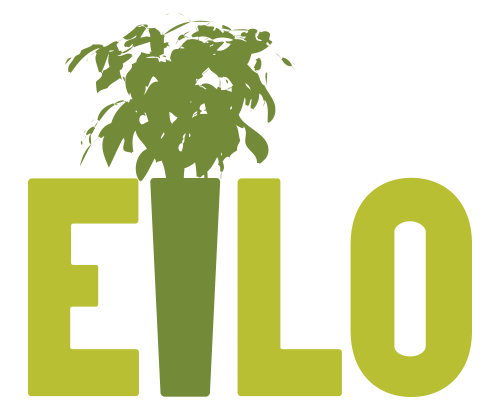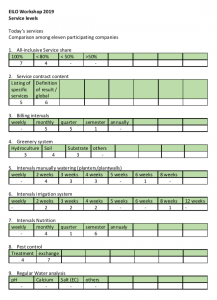
Along the green axis of the Ville Lumiere
This year EILO held both its excursion and Best Project Award Ceremony in the heart of Paris. With over 60 participants this was the largest turnout ever. Interior planters from 11 European countries and the USA were treated to a Thursday afternoon full of bugs, substrates, photosynthesis, marketing trends and creativity and a Friday packed with green roofs, walls, jungles and cool new workplaces. New this time were the workshops on Thursday morning. They not only generated great interest, but an abundance of exchanged knowledge too.
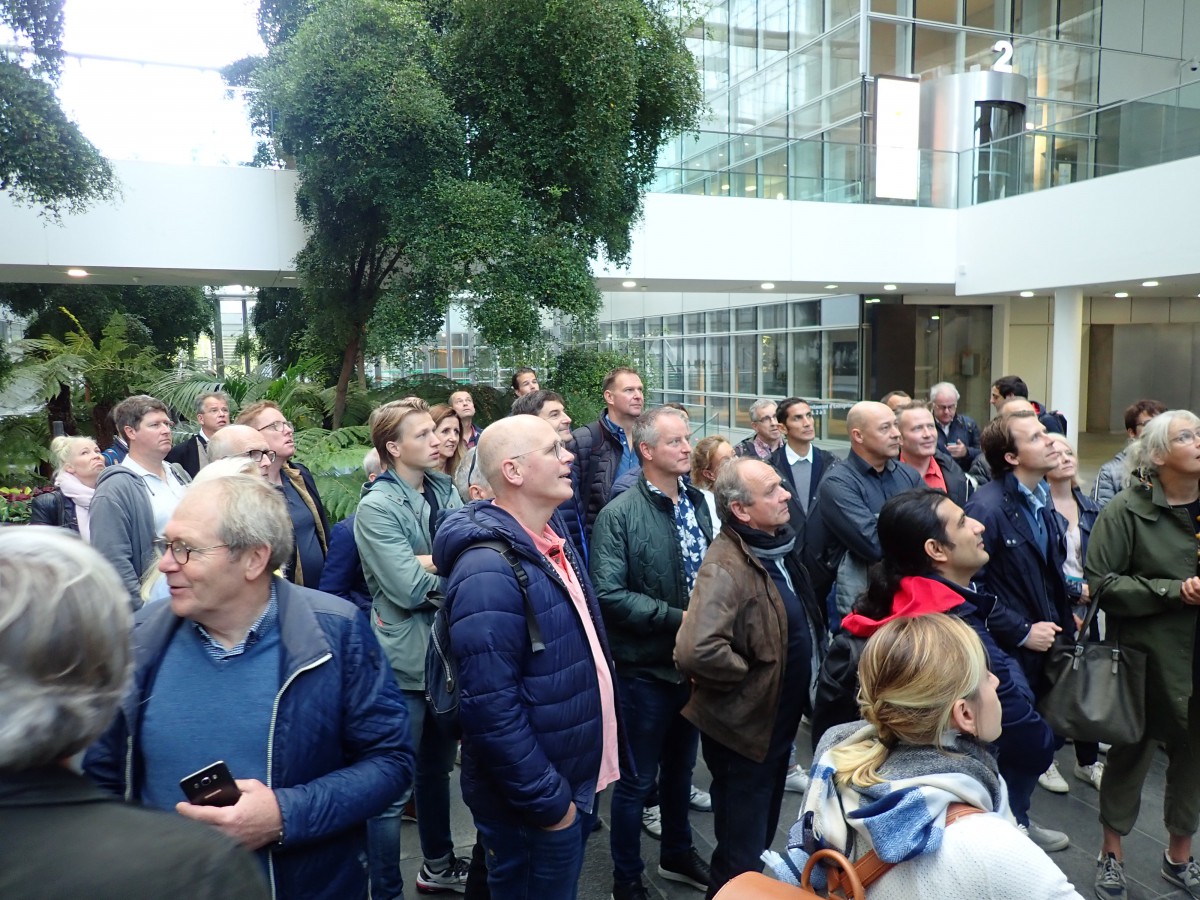
The workshops
Plant care means more than adding water
Michel Aebi
The workshop was originally divided into two parts, a comparison among the eleven participating companies and an exchange of ideas for future services. From the beginning, a lively discussion developed in which large country-specific differences arose. While in the southern countries the customers are usually visited every two weeks, in Scandinavia it is three weeks intervals and in the German-speaking area and in Holland the standard is four weeks or more. It was confirmed that in most countries a system (soil/hydro/substrate) is predominantly used. Of course, not all results are statically verified for eleven participants. There was only limited time for the second part. The participants agreed that there is a lot of potential in the connection from the inside to the outside as well as in the worldwide trend towards biophilic design. A compilation of all results can be seen in this list.
How to find and keep the best clients?
By Marieke Karssen
Each of the three workshop sessions was an unique conversation. In an ultrashort timespan of 45 minutes Marieke took the participants through their complete (online) sales and marketing build-up. Questions were: what is the aim of your company? And, who is your ideal customer? With both questions in mind the group shared knowledge and feedback on each other’s sales processes and how these were translated online.
The key message behind this setup was of course that being active online costs a lot of time. This time is best spent when companies organize their online activities as an integral part of their sales approach and in line with their offline activities and strategies. For example, when a lot of new customers come to you through office furniture sales agencies, why not create an special online gift or webinar, especially targeted at this group? The more office sale people know about and are inspired by interior greenery, the better they will help to sell your business.
Another interesting learning point was that though participants claimed to want to attract every client, as long as they pay well, in the end all workshop groups concluded that doing everything for everyone in fact means that you have no unique profile. It is much more interesting and rewarding to specialize in a niche market and become very good at a limited number of things and in servicing just a few specific target client groups.
Online Education for Plant Technicians
By Erik Utas and Peter Lind
Peter and Erik started each workshop presenting a brief background on the challenges in the Nordic market, the founding of the Nordic Green trade organization and the initiative to create a tailor-made, online tutorial for plant technicians.
Thereafter the workshop participants were given a short walk-through of the beta (English) version of Nordic Green’s education. Peter and Erik then raised the question: could the tutorial be of interest to your company, if available in your language? The interest and curiosity seemed high among all participants.
In the next phase of the workshop, the participants were asked to share their thoughts on the challenges regarding recruitment and on-boarding of new plant technicians in their respective countries. From these discussions it was concluded that there is a somewhat similar situation in the majority of the countries represented; i) although the general interest in green plants is high, few people are aware of the plant technician occupation ii) it is hard to find candidates with relevant backgrounds and iii) it takes a vast amount of time to on-board new employees. Furthermore, there is a common lack of relevant, higher lever, theoretical courses for plant technicians (The Netherlands and the Nordic Green countries being exceptions). In conclusion, the workshop leaders were given the impression that there is a strong potential in joining forces within EILO to create a common, multi-lingual course.

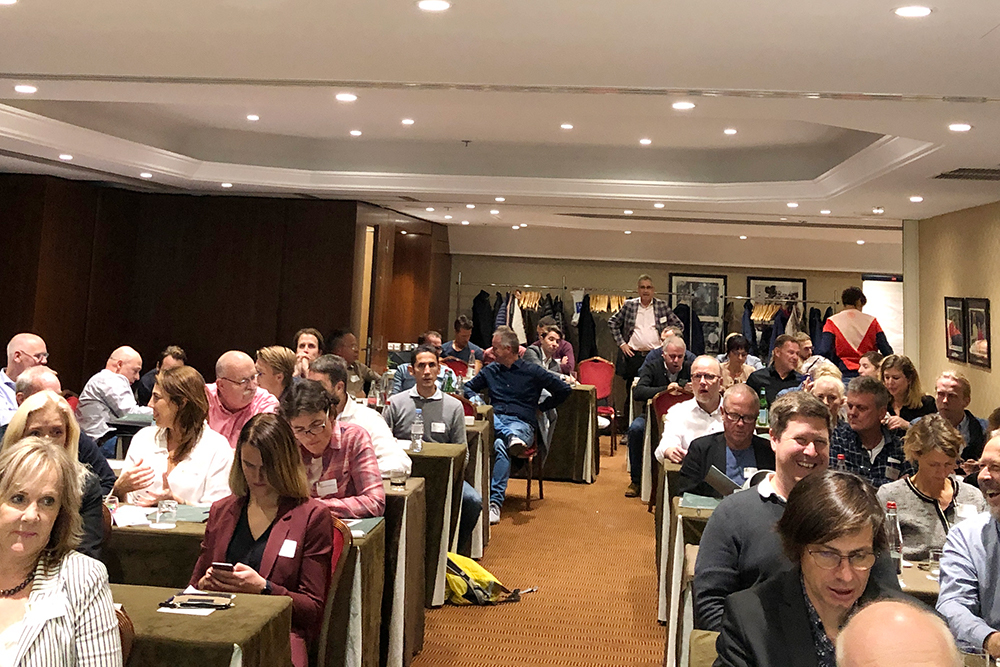
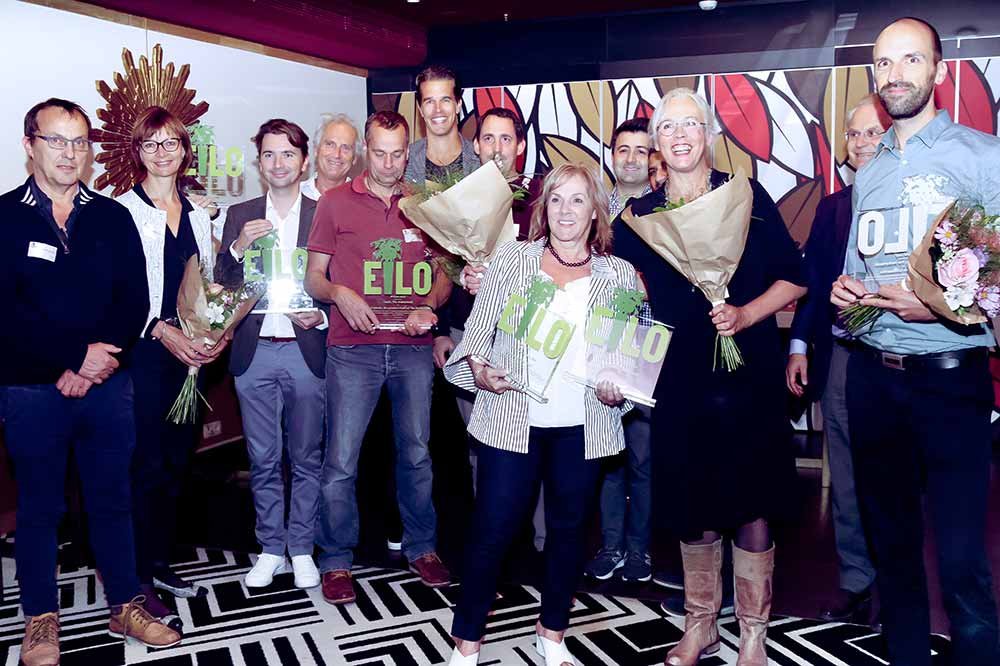
The Thursday afternoon Symposium
Innovative designs with plants in an urban environment
By Alexis Tricoire
Alexis Tricoire was trained as a ‘regular’ designer. He created chairs, tables and other objects until he met Patrick Blanc in 2006. This changed his whole mindset about the role of design, the importance of greenery and our relationship with it. Since then he never stopped working with nature. The designs of the space, or object or planter of which the greenery is an important part are his, and the interior landscaping company or botanical expert will then decide on the actual greenery that is being used.
Interior Landscapes in France, Major Challenges and Trends
By Pierre Antoine Thévenin and Pierre Darmet
France is a big country, so it employs a lot of people in the interior landscaping industry. A major trend and chance for the sector is that everybody, in France too, loves #green. At the same time, the biggest threat for the business is the difficulty to find people that want to work in the sector. Another very interesting phenomenon is the way new startups enter the trade. Sometimes fun and innovative in a complementary way, but at other times perceived as very disruptive. This led to quite a lot of discussion among the participants.
Bringing Research indoors
By Paul Davis
It is not uncommon to lose trees and large plants that aren’t happy in their office habitat. This is bad news in terms of money spent, but for your reputation as an interior planting company as well. Paul showed us a tool that is able to detect health problems in plants long before visual signs show up. The tool measures the plant’s photosynthesis capability and compares that to a database of healthy plants. This tool is now well used in outdoor trees, but for indoor landscaping this is a new system. Therefore the norm database will need to be developed. Useful connections were made right after the symposium.
The (im)possibilitiies of biological protection in interior landscaping
By Paul Tremmellat
This lecture was about bugs, counter-bugs, the laws about bugs, and the problems of keeping the good ones alive in our regular office habitat. Paul went through the most common pests and the best methods of controlling them via insects and chemicals and the legal history behind the most commonly chosen solutions and their (im)possibilities.
The possibilities of organic fertilizers for Interior Landscaping
By Erwin Weening
The last speaker of the symposium was Erwin Weening from DCM. He explained the workings of potting substrate works, its contents and capacities and how DCM made substrate sustainable, long term and – no minor issue – peat free.
The Friday excursion
The day was grey but mostly dry. We took off from our hotel near the Champs Elysees at 8.30, via Metroline 1 to La Defense. In the morning and early afternoon we visited 3 fabulous office buildings with lots of interesting greenery, an older but still beautiful wall of Patrick Blanc and an enclosed garden. After which we took the metro back to the busy Paris streets and visited an inspiring modern office location and a huge green wall installed by Modulogreen. Finally everyone could visit some stores that had nice greenery inside. The Apple Store for example, or the Galeries Lafayette, both on the Champs Elysees.
The big green office space of the Coeur Défence
With 300.000 square meters this is the biggest office building of France. It is not that high, only 20 floors, but is comprised of four towers with a big, 5000 square meter central space in between. This space was given a green make over, now 5 years ago, and this added a lot of value to the whole office concept. People like it, and it is well maintained by a team of 4 people from the company Serdeco, that visit the place once a week.
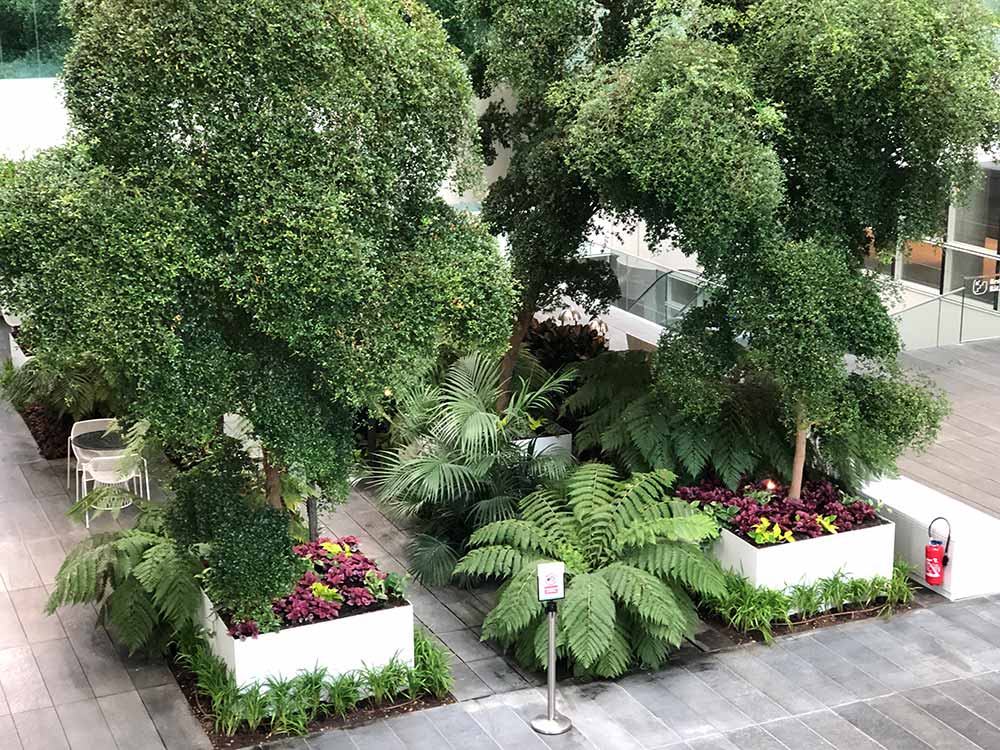
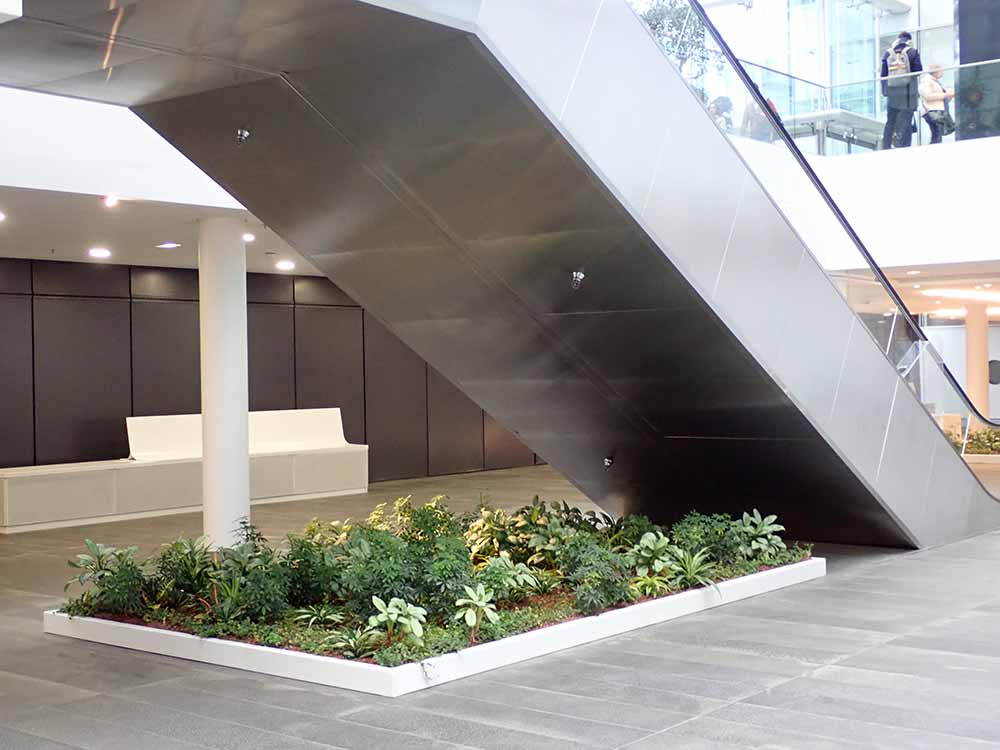
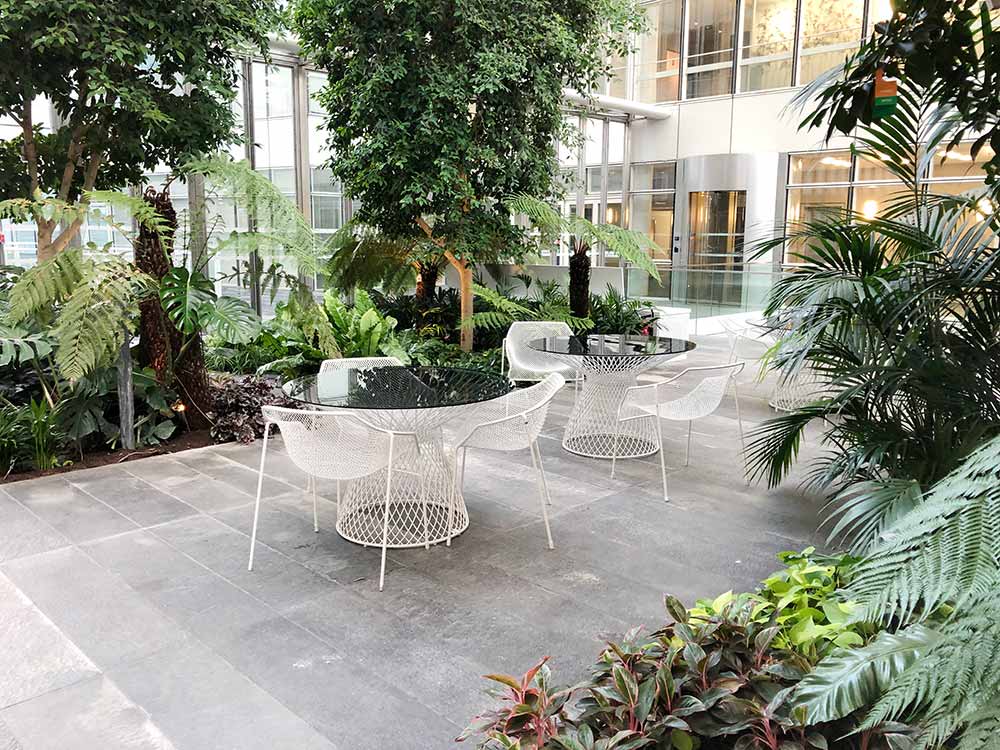
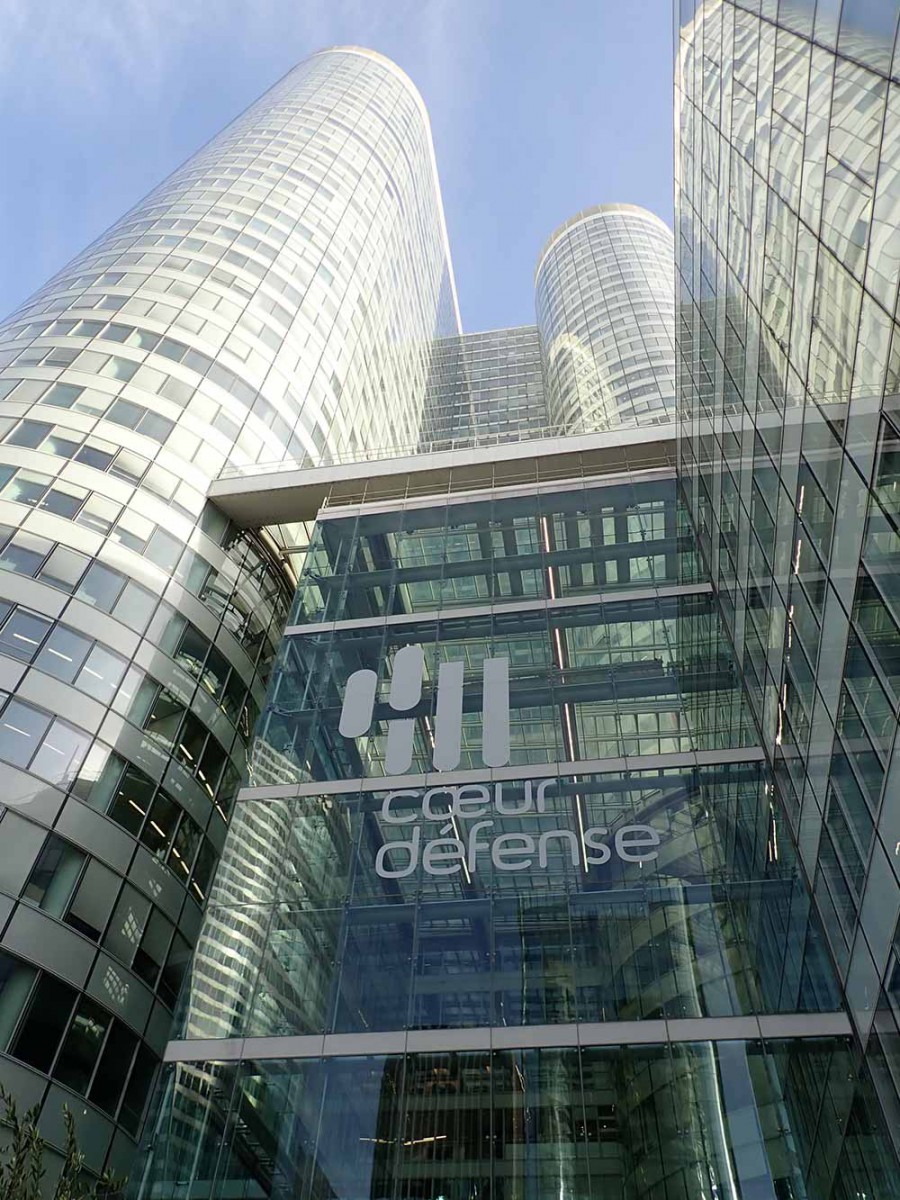
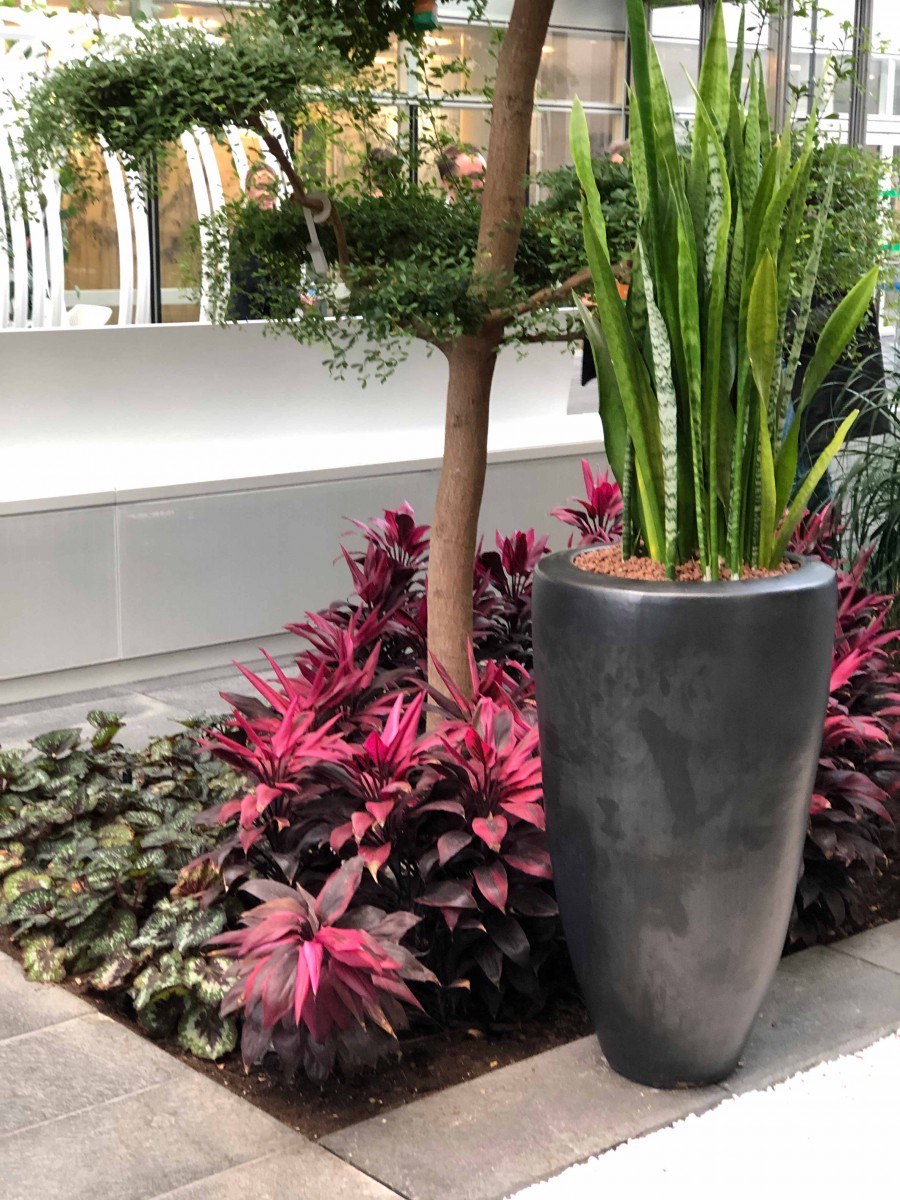
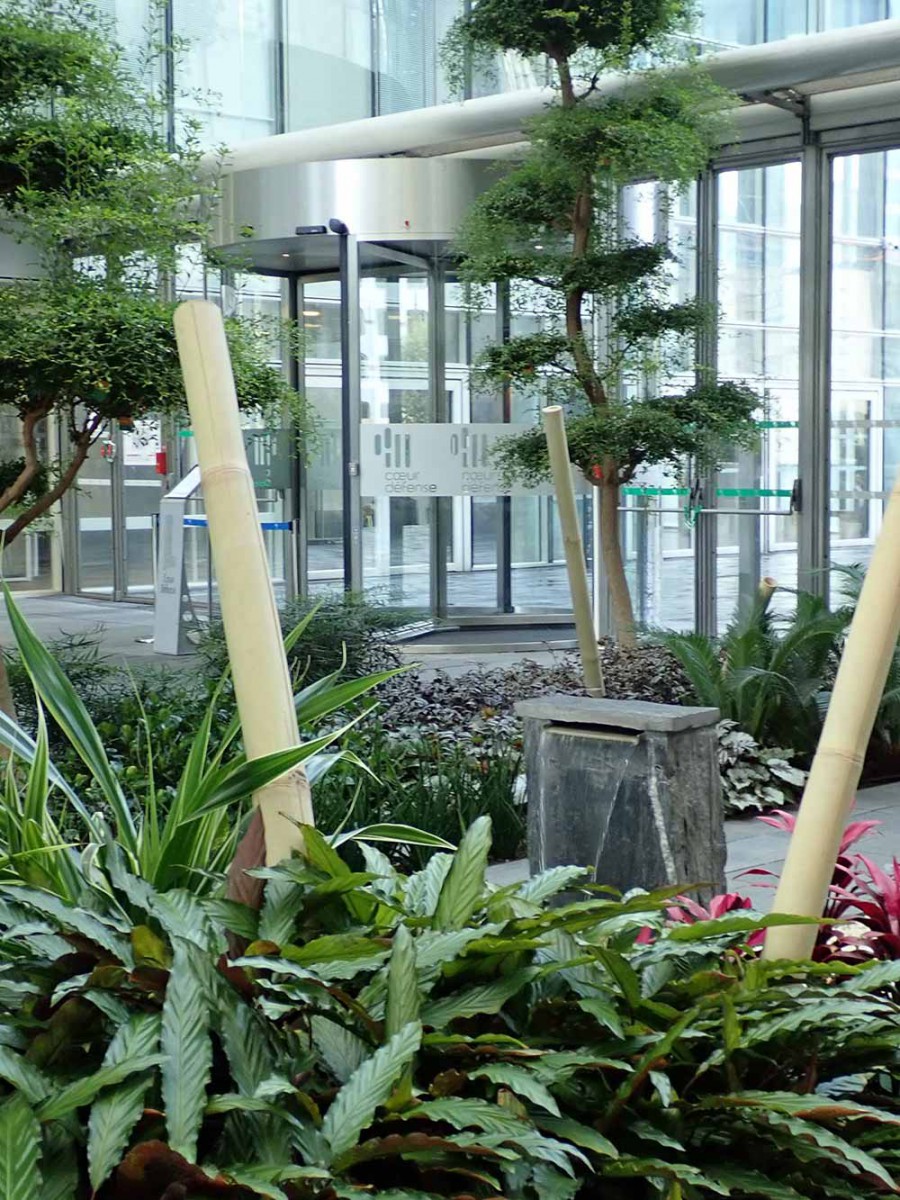
The tree of the Tour D2
“This tower is built like a tree”, said architect Anthony Béchu. Its roots are in the cellar, the tower is the trunk and its leaves can be found in the garden on top. It is built like an exoskeleton, also just like a tree: the building gets its solidity and structure from the outside skeleton of the metal structure. This is an unique approach that was very economical in terms of the use of materials too.
The garden on top showed the structure and the leaves of the building in a magnificent way. While still having to reach maturity it gets more biodiverse each year.
If you want to know more about the vision of the architect (and have some understanding of the French language):
https://www.youtube.com/watch?v=13Hd-VS_l1s
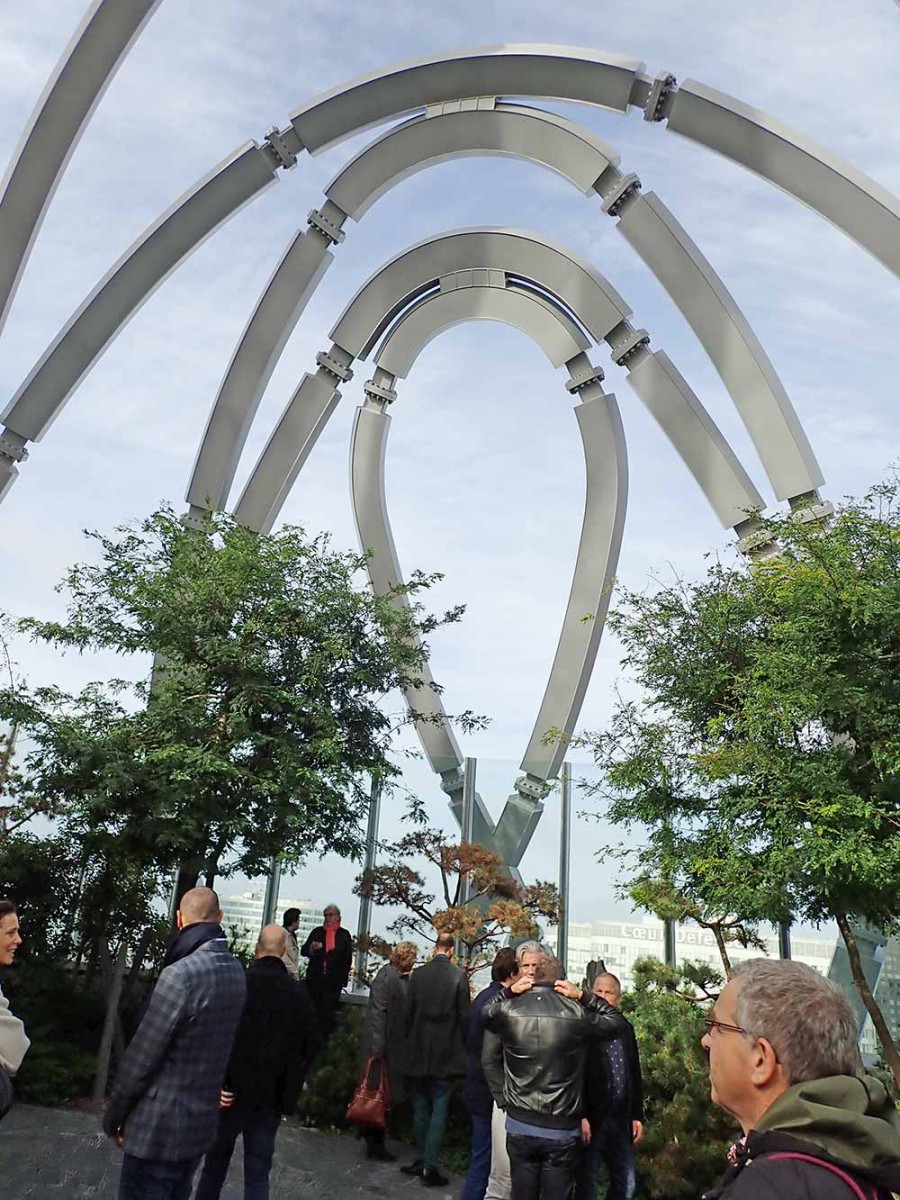
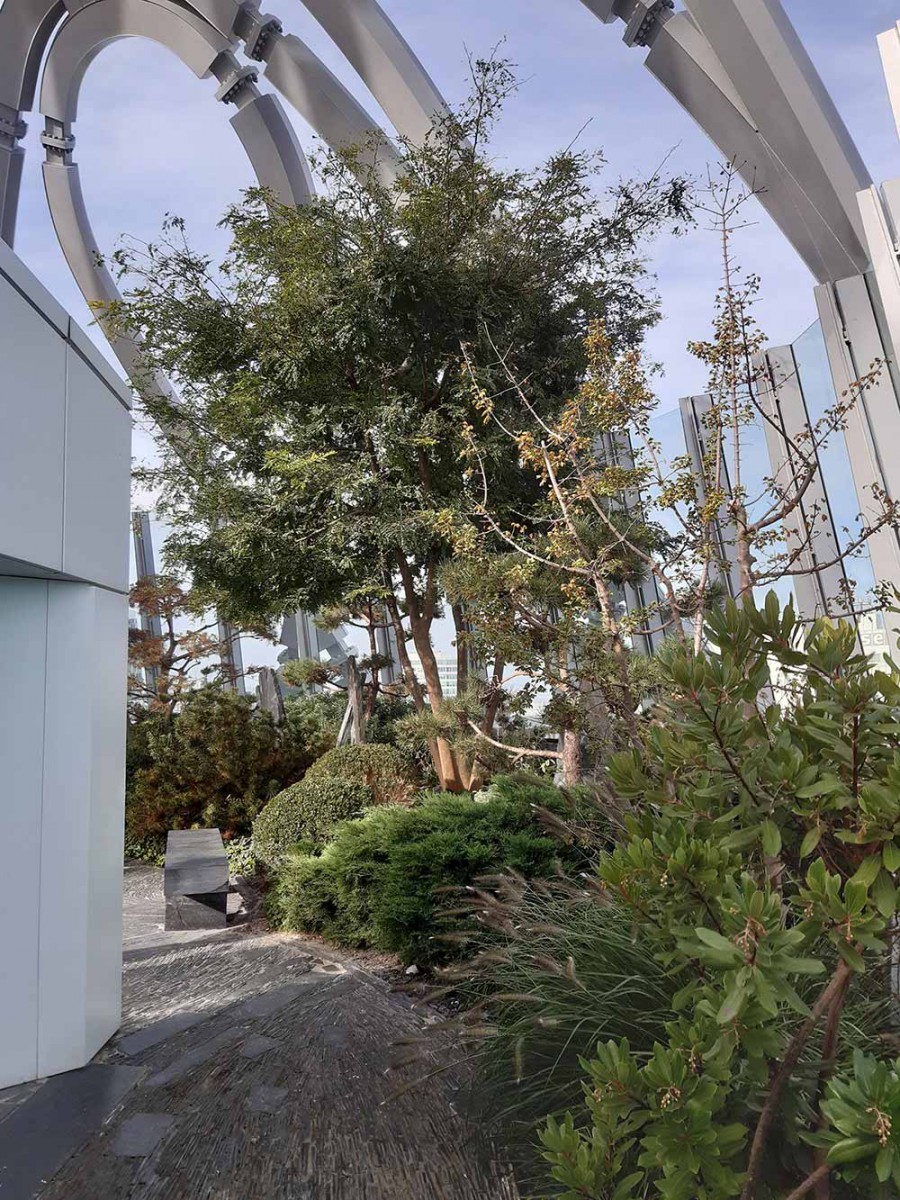
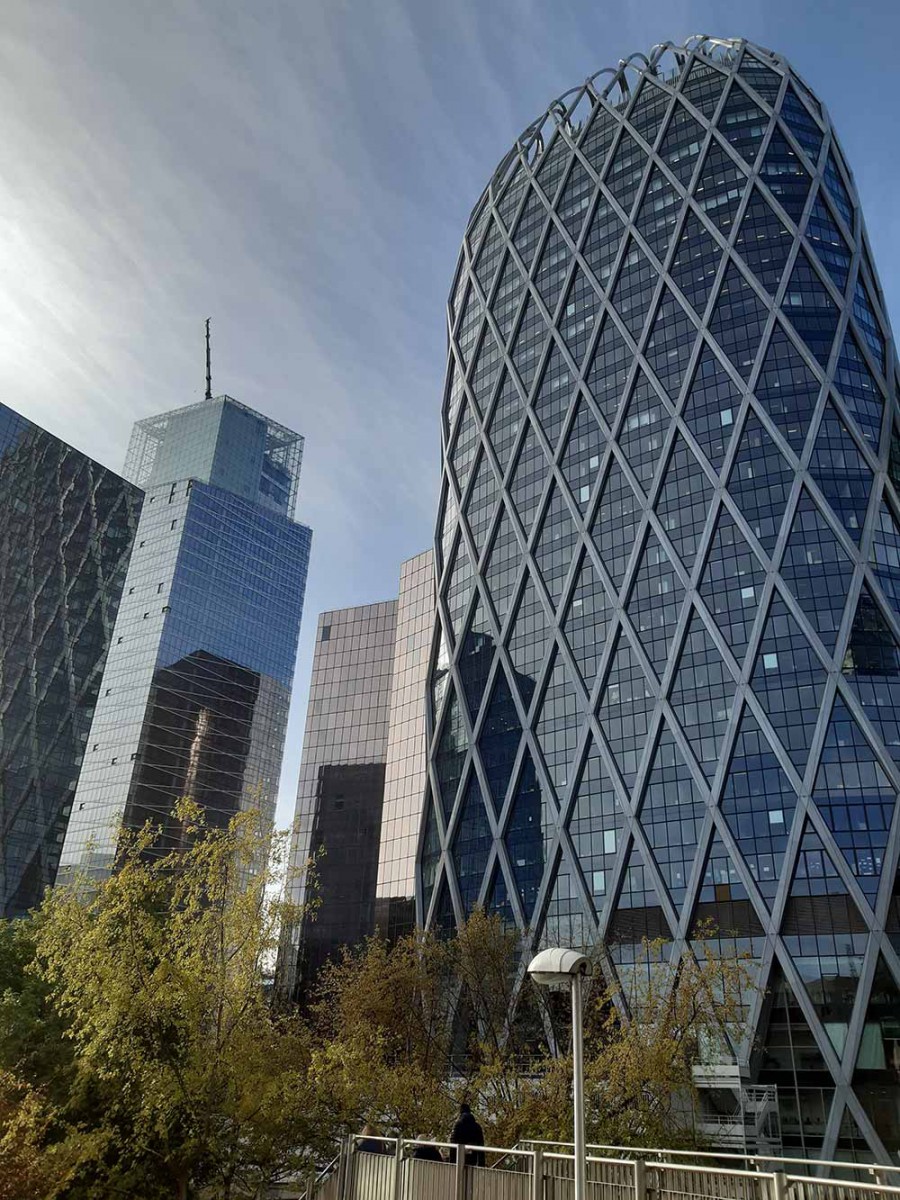
Three wonderful sights in the Tour Carpe diem
In this building we visited three separate spots: on the ground floor and a bit below we visited a true jungle, including jungle huts where you could meet in a pleasant, humid ‘jungly’ way. Mid tower we saw offices that contained edible/ snackable pot plants and on the top floor we could not only enjoy an again magnificent view, but also a wonderful rooftop garden.
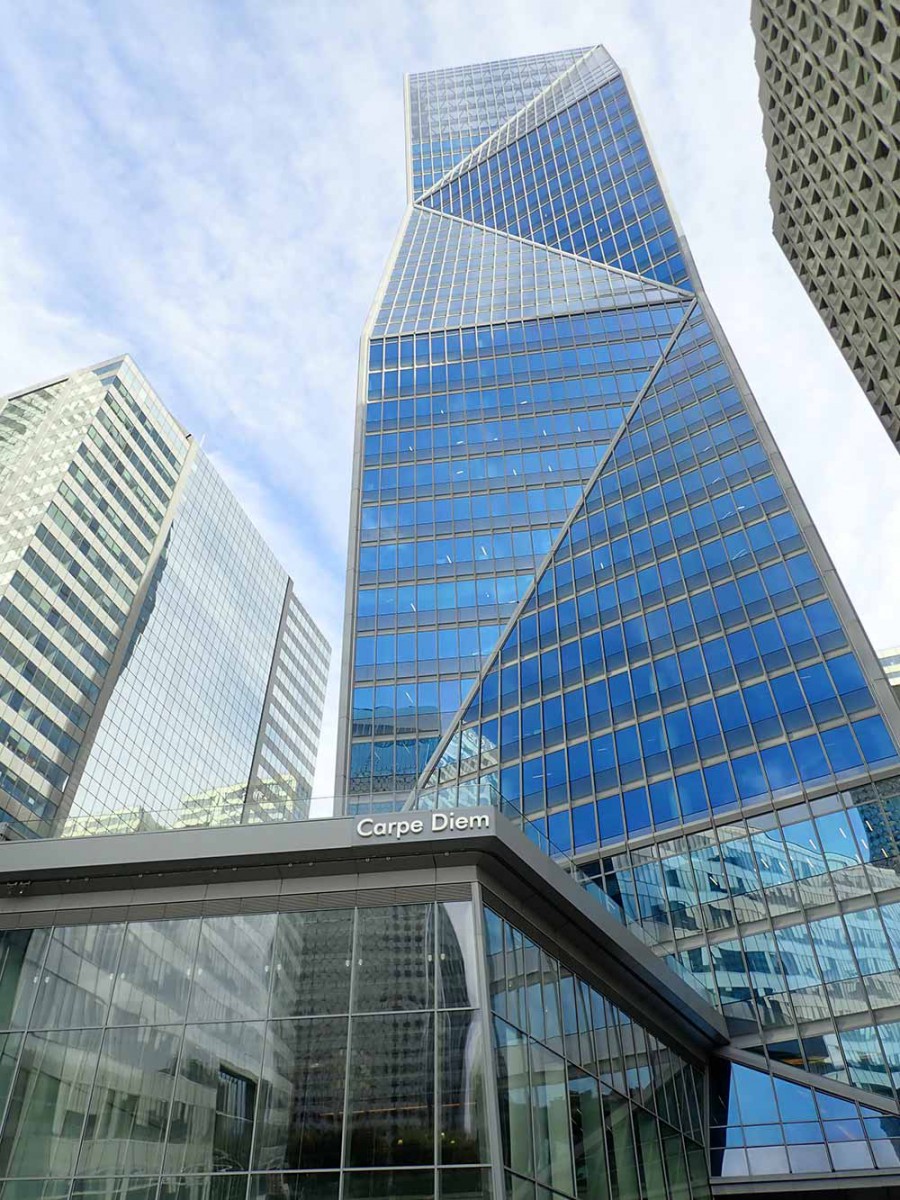
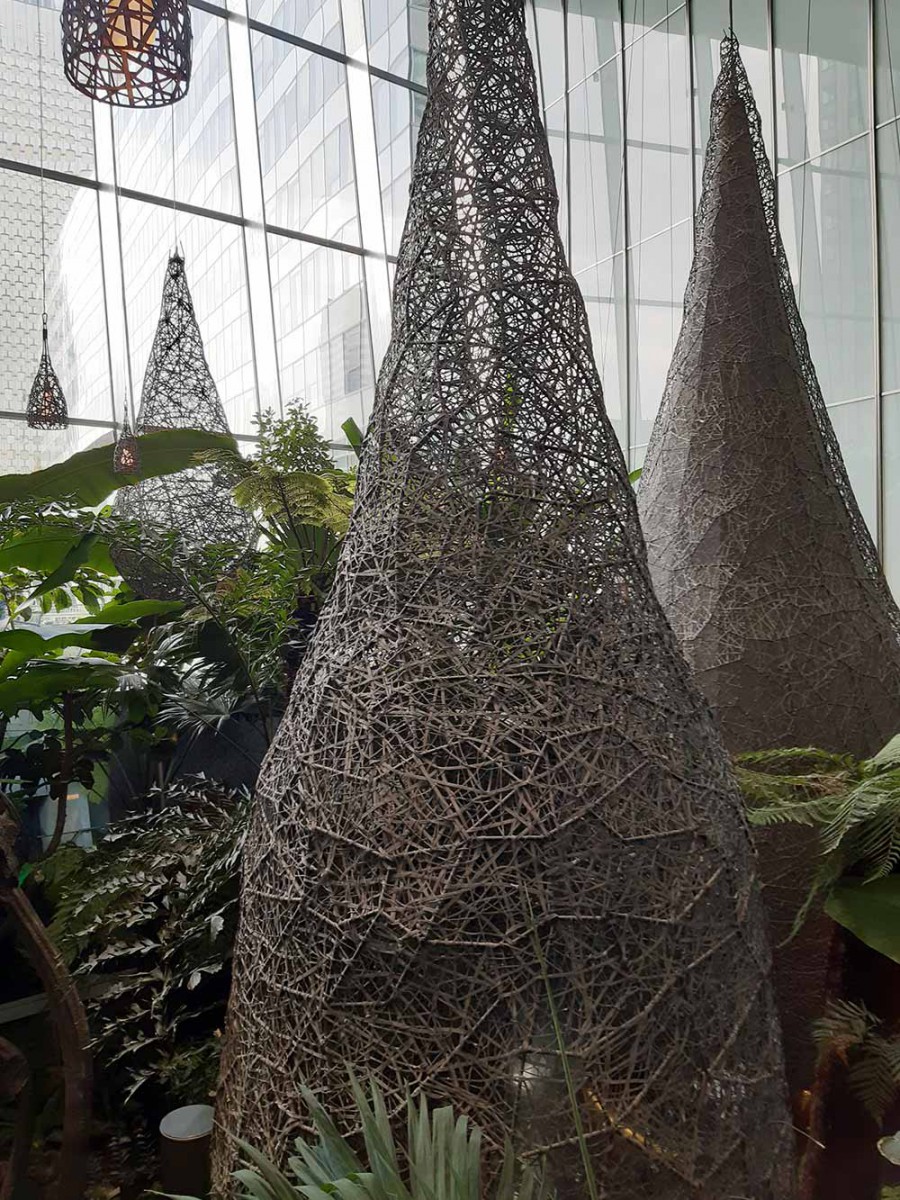
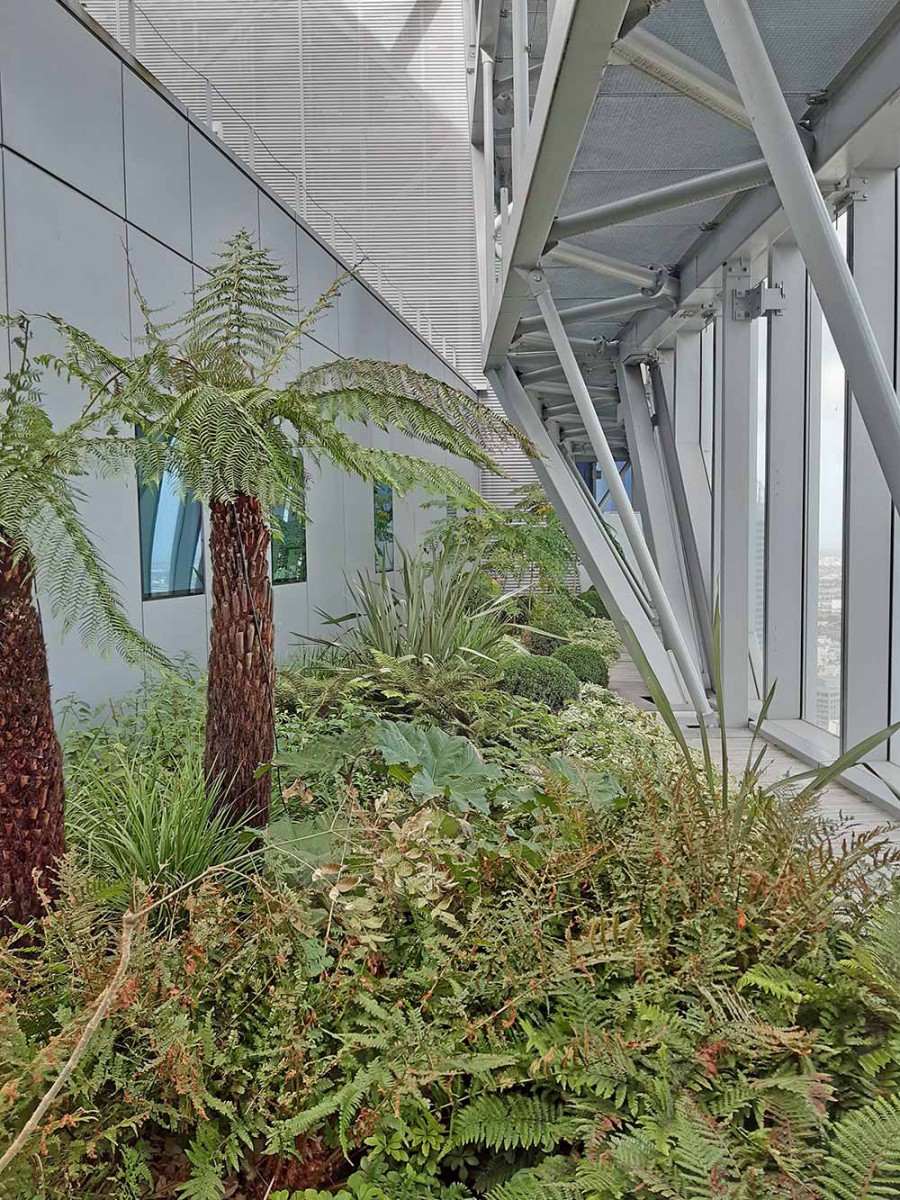
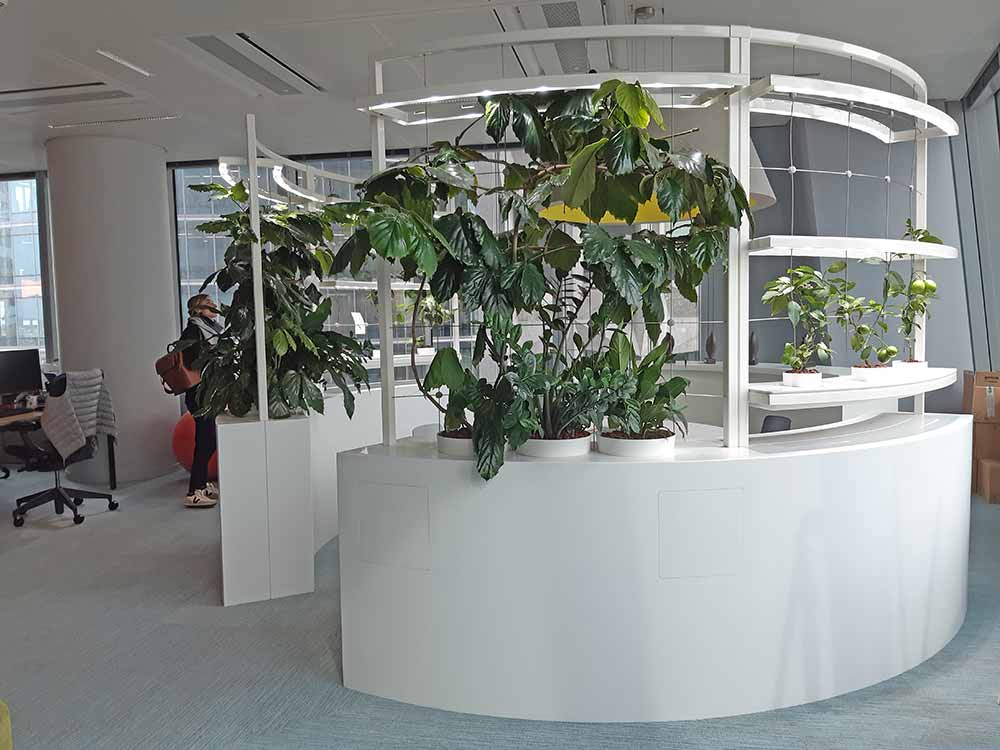
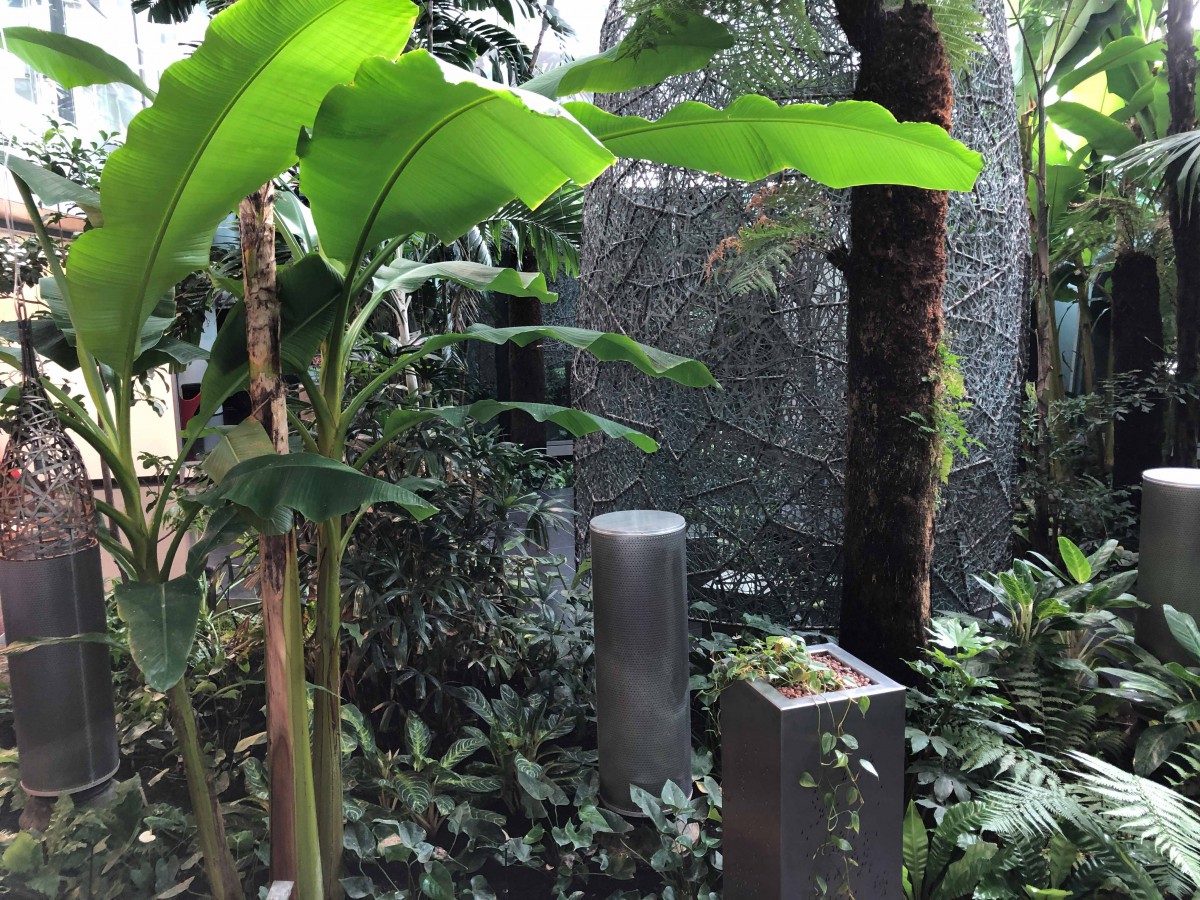
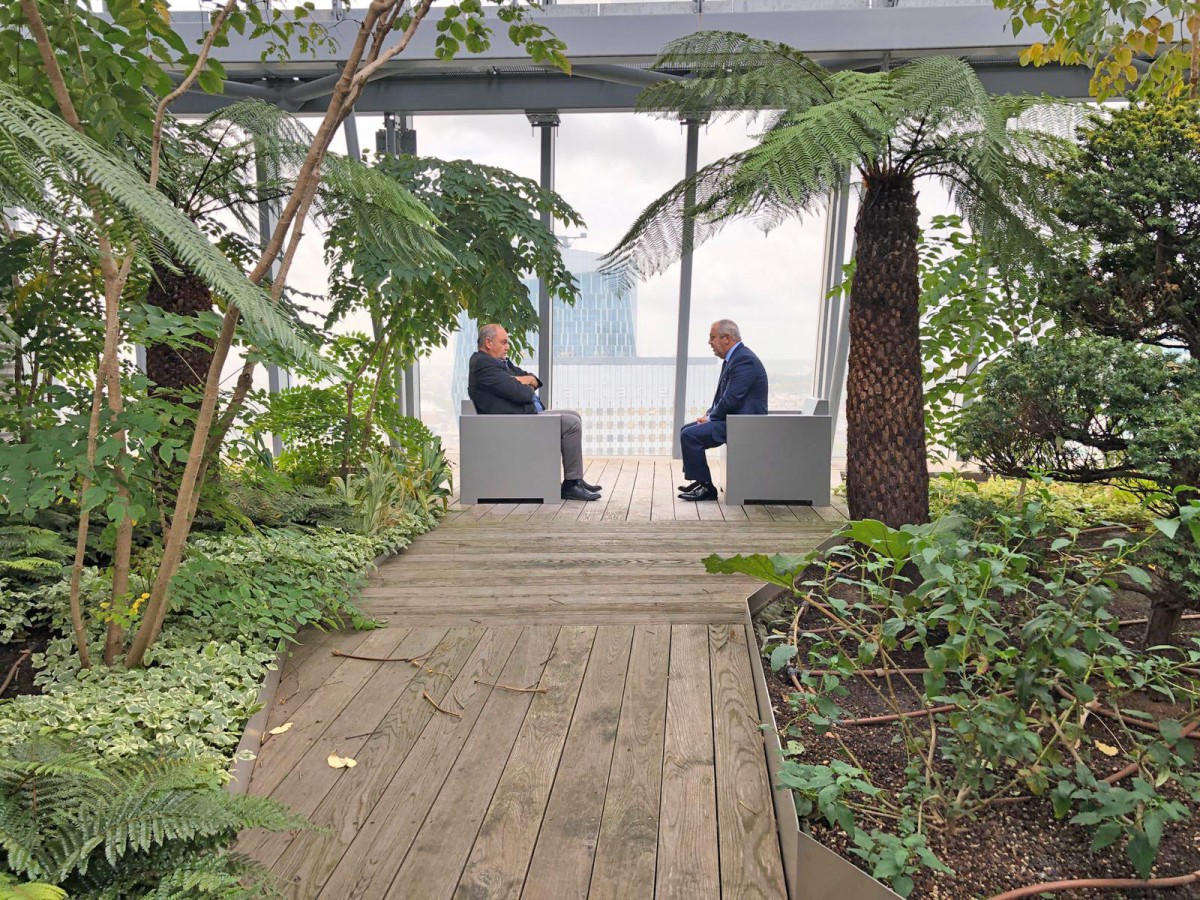
The wall of Patrick Blanc at les 4 temps
This very beautiful wall is 12 years old. It gets pruned twice a year and is maintained once a week. It needs 10 to 15% new plants per year. Not very different from other plant projects actually.
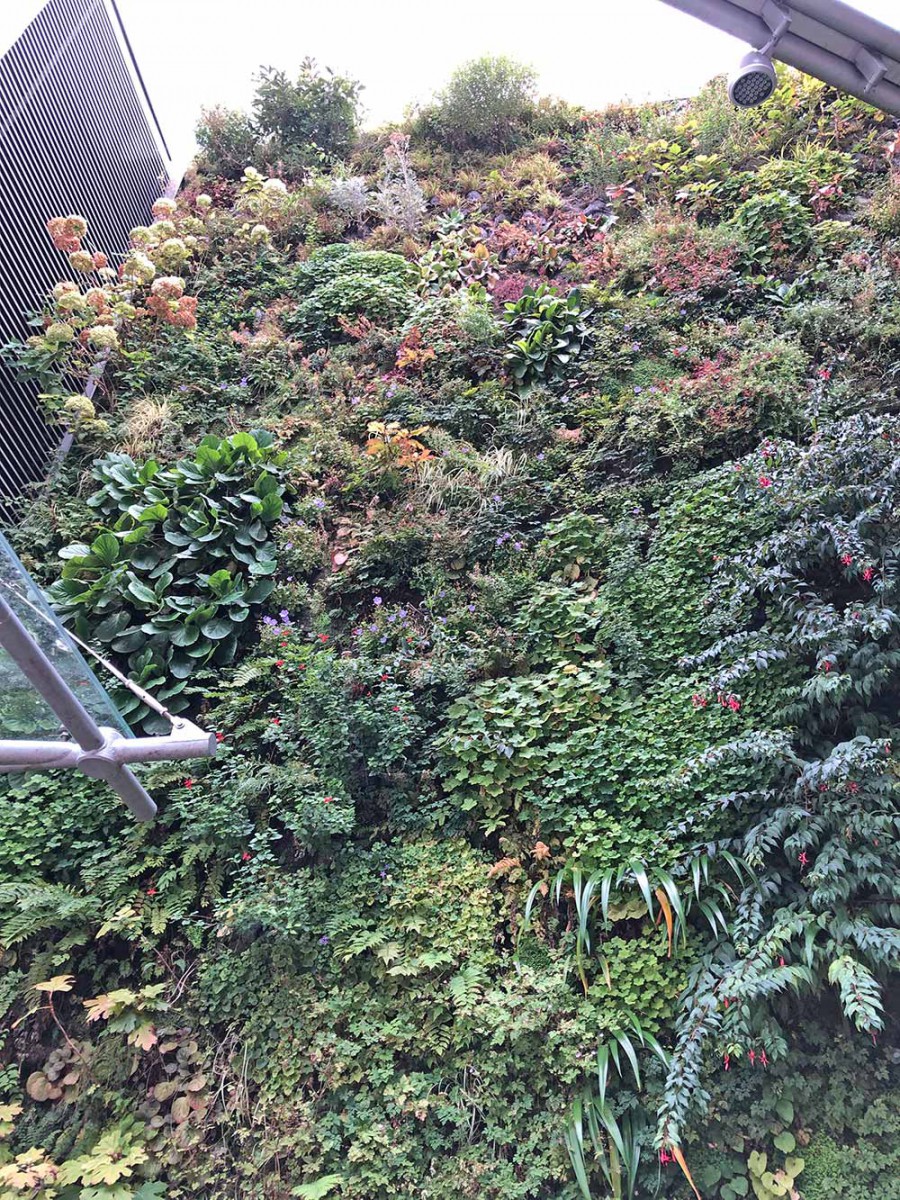
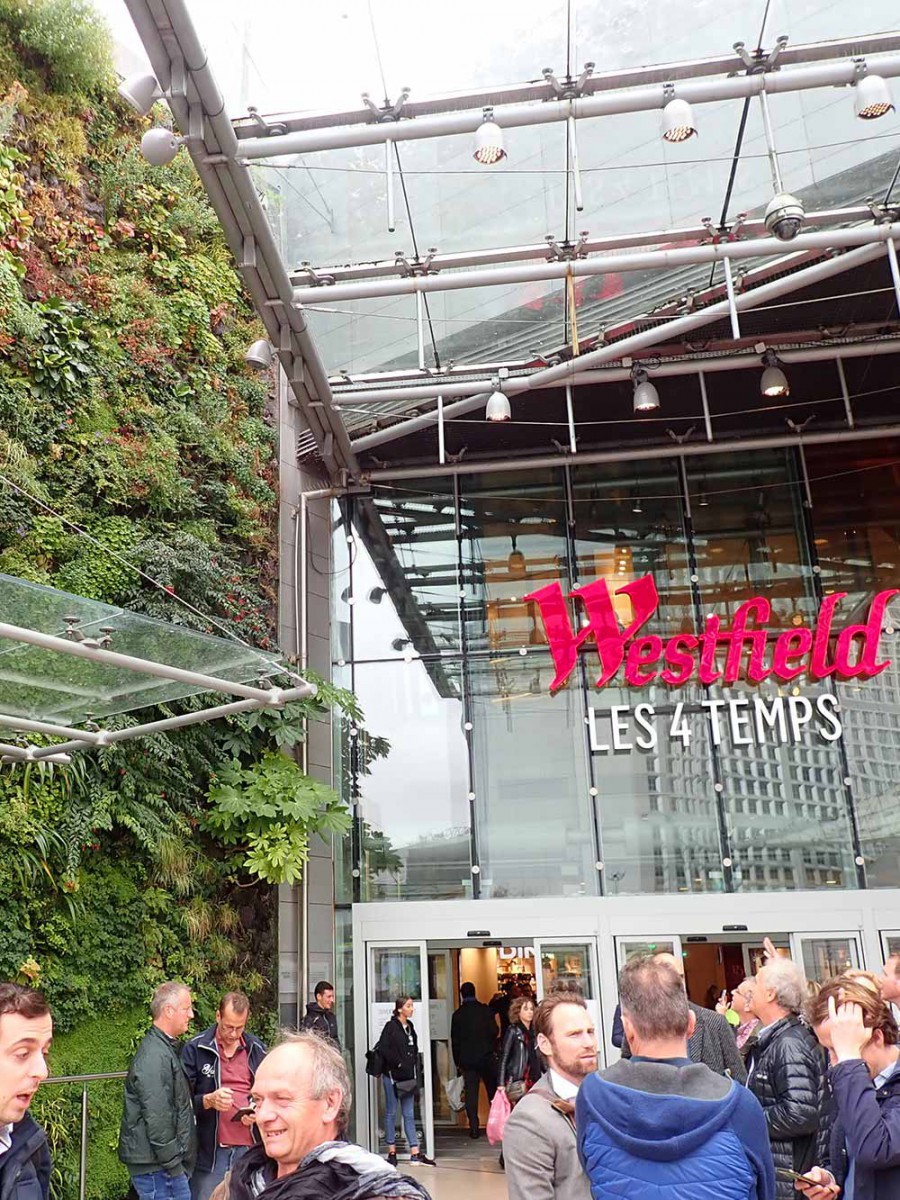
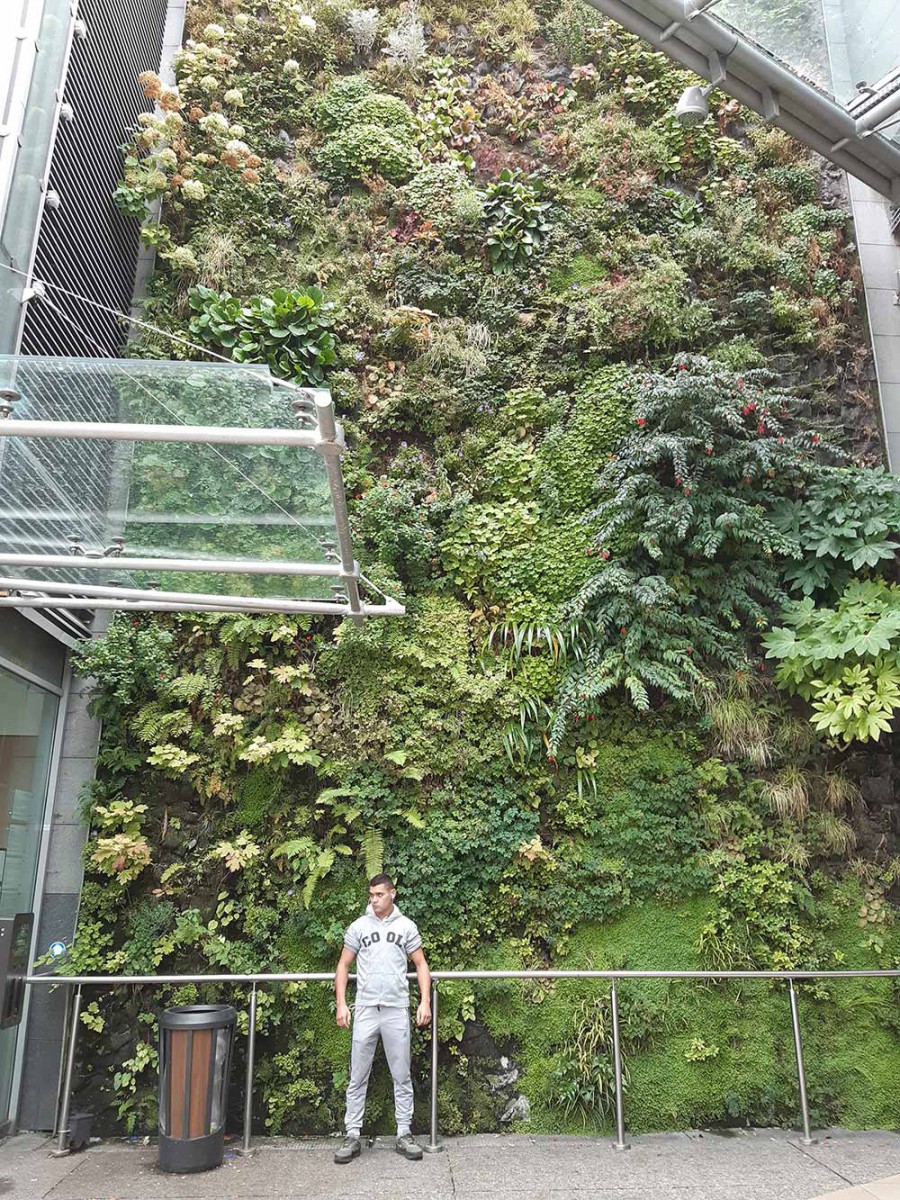
The wonderful enclosed Colisée Gardens
On entering the space we could feel it immediately: a warm microclimate where even tropical trees feel welcome in our climate. It all looked healthy and happy, so one could easily forget that these trees aren’t rooted in real soil. The whole of The Defence is 8 meters above ground level, including these giant potted! trees
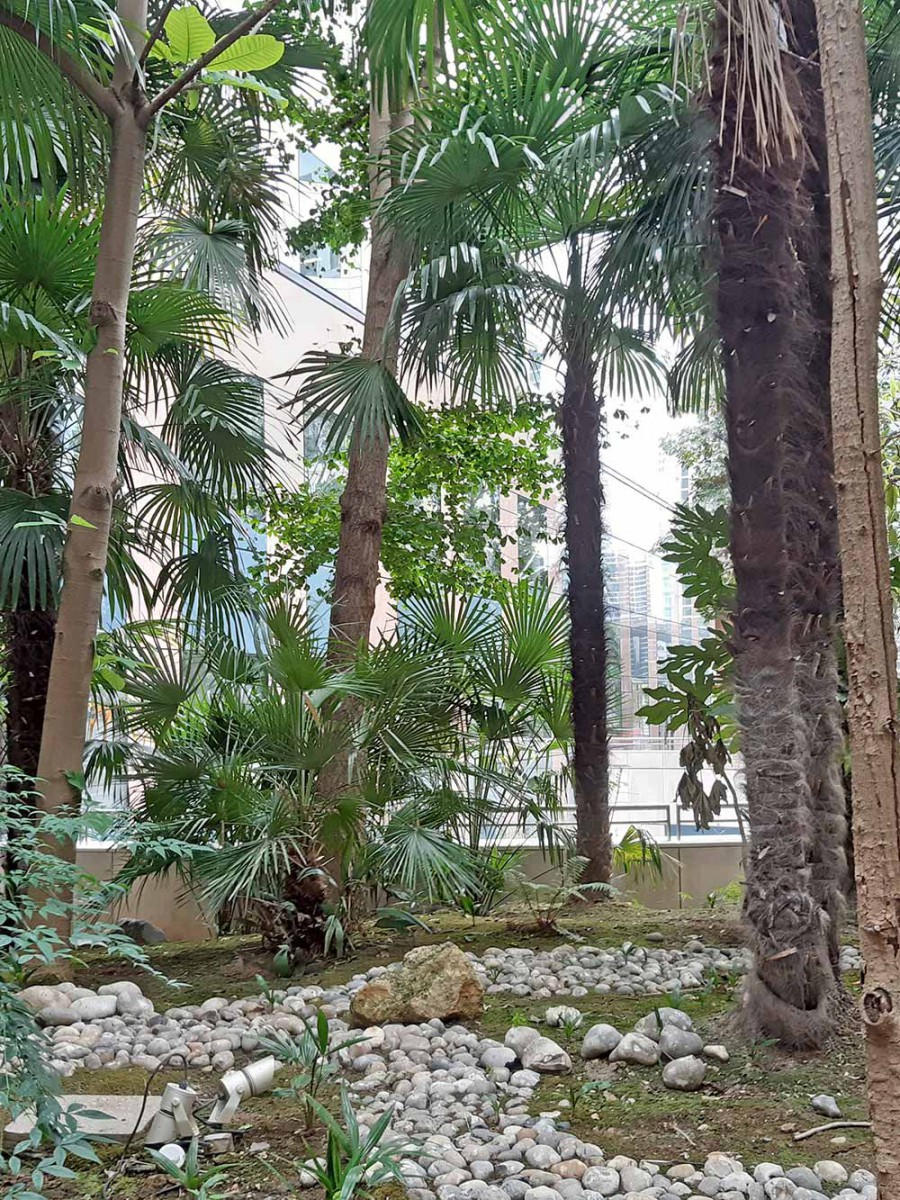
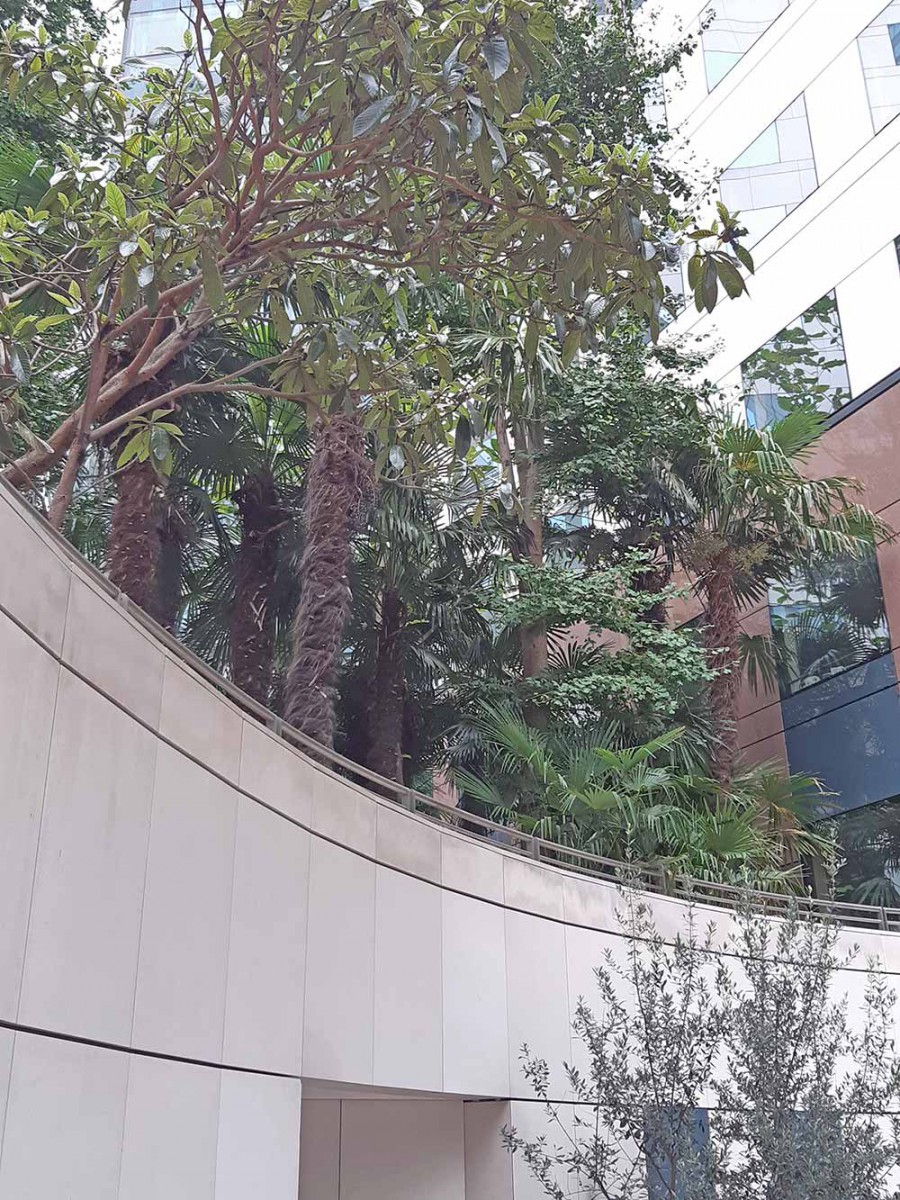
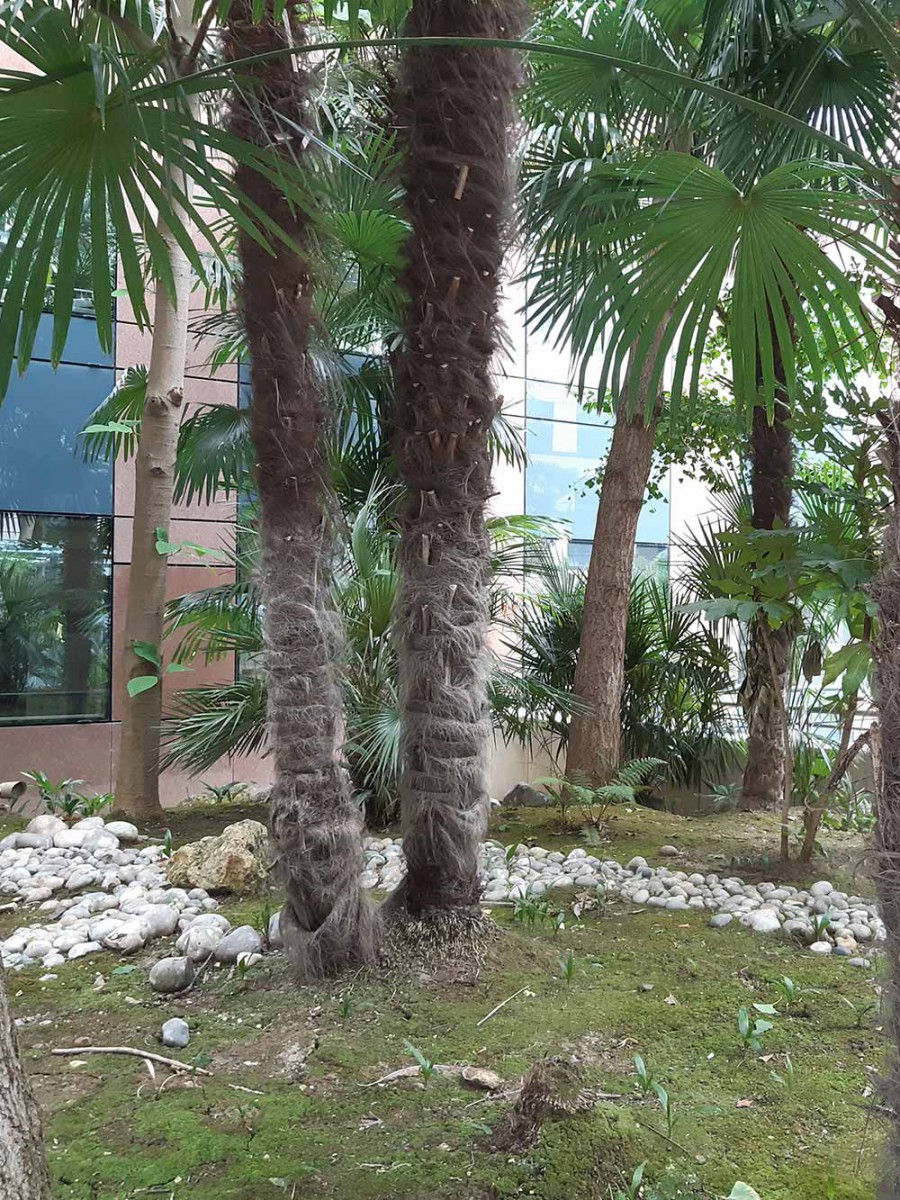
Happy and homely workplace Kwerk
Back in the city, on a Friday afternoon, this work-place almost didn’t feel like work at all. We just wanted to snuggle in one of the comfy couches, with a cup of tea and be .. home. The plants here are a natural part of this homelike style. The ones on top of the shelves are artificial, all other plants are real.
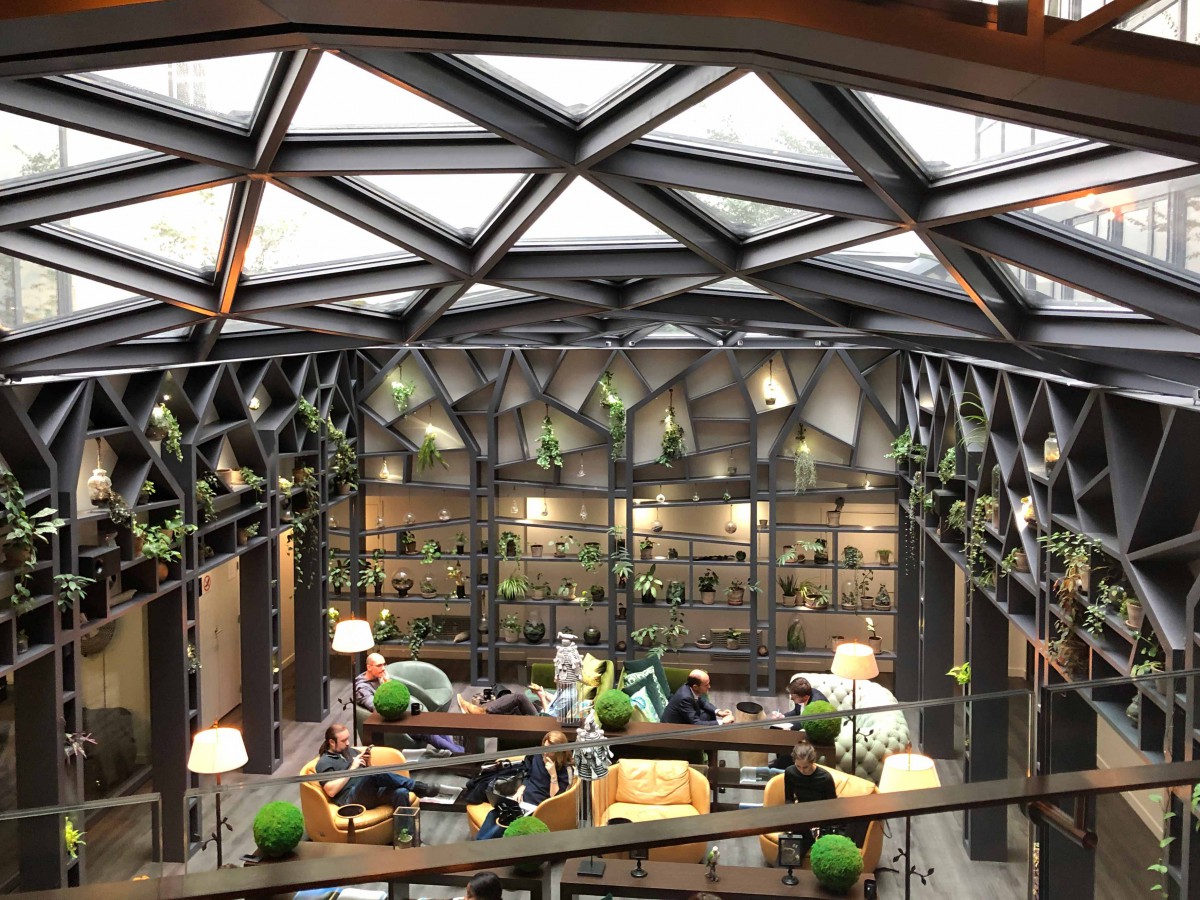
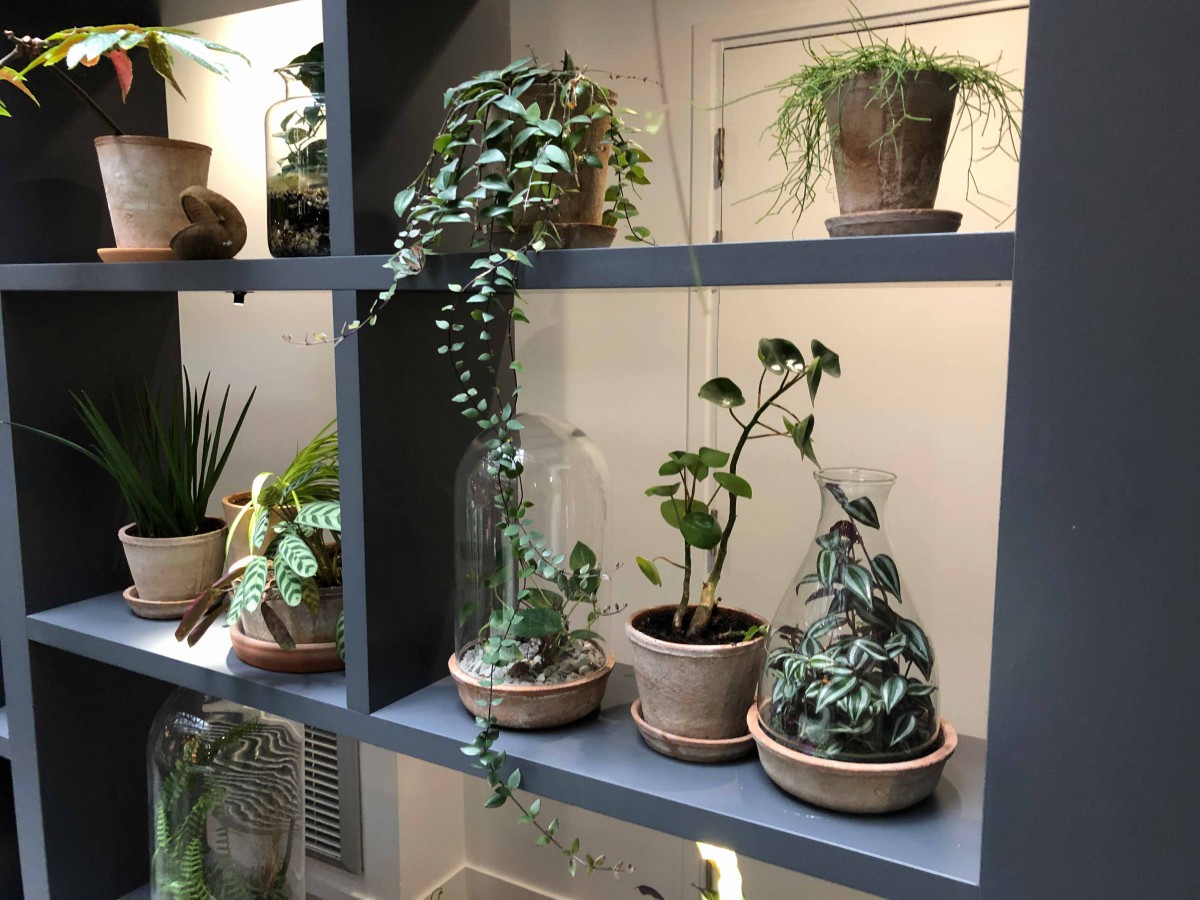
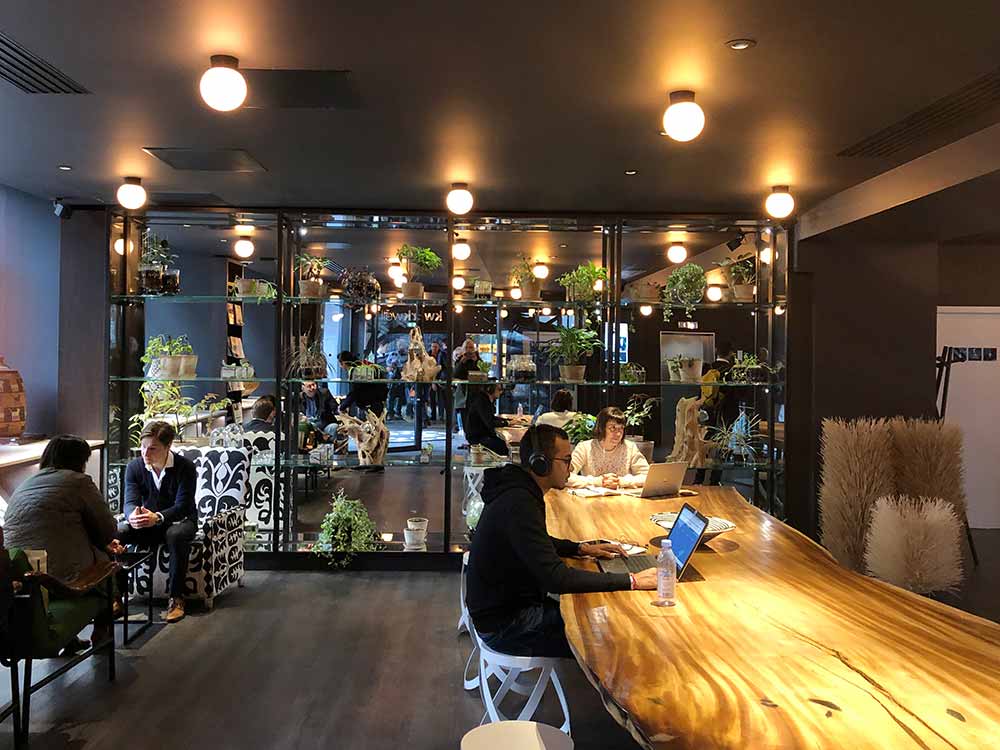
The big wow of Washington Plaza
The official part of the excursion reached its peak with the final visit to the lush office garden and 550 square meter green wall of Washington Plaza! This garden and wall were created in 2014, constructed with the circular module system of Modulogreen and irrigated using a recyclable rainwater system. In summertime it needs a 3 to 4 hours maintenance thrice a week, in winter 2 hour maintenance twice a week. The key is to give not too much water and also not too much fertilizer. All pest control is biological. Parts of the space have low lighting conditions. Recently they added new LED growlight spots
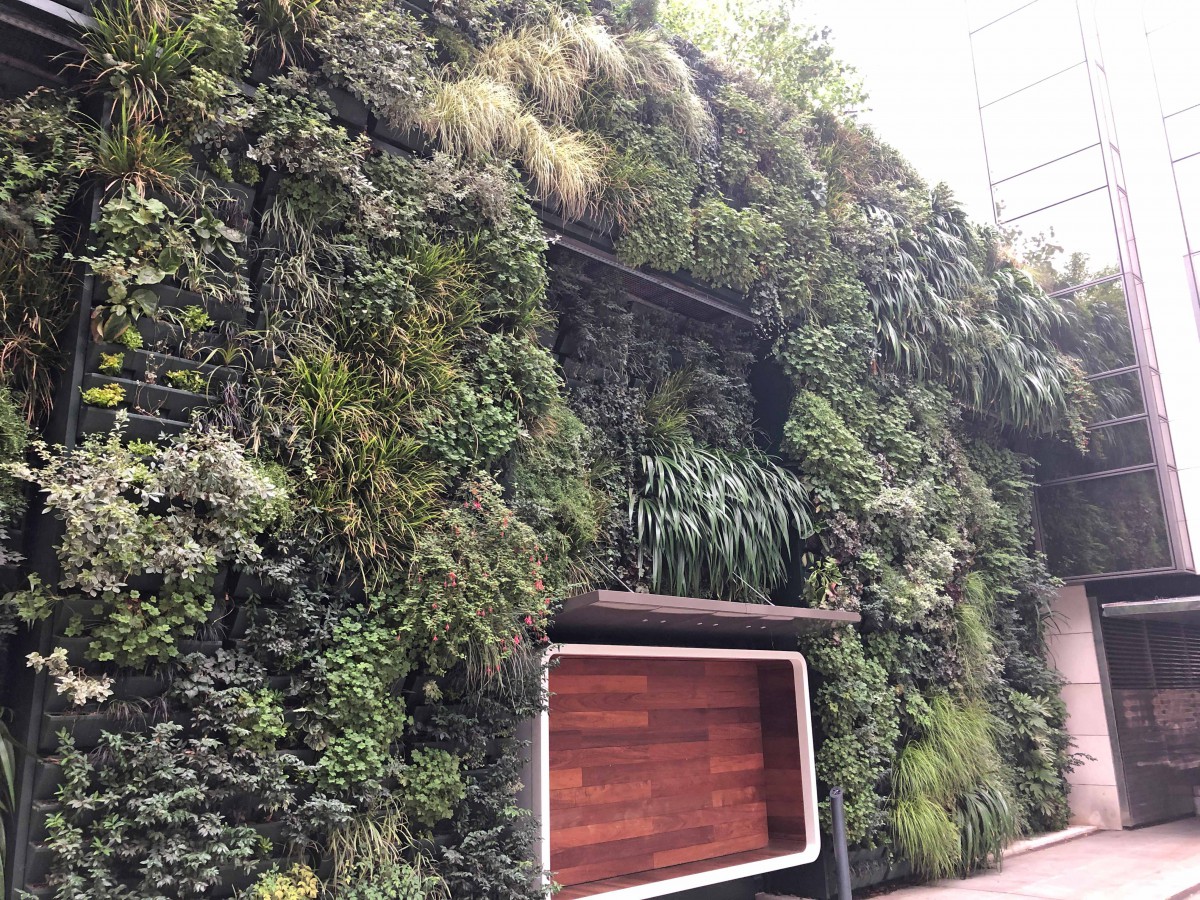
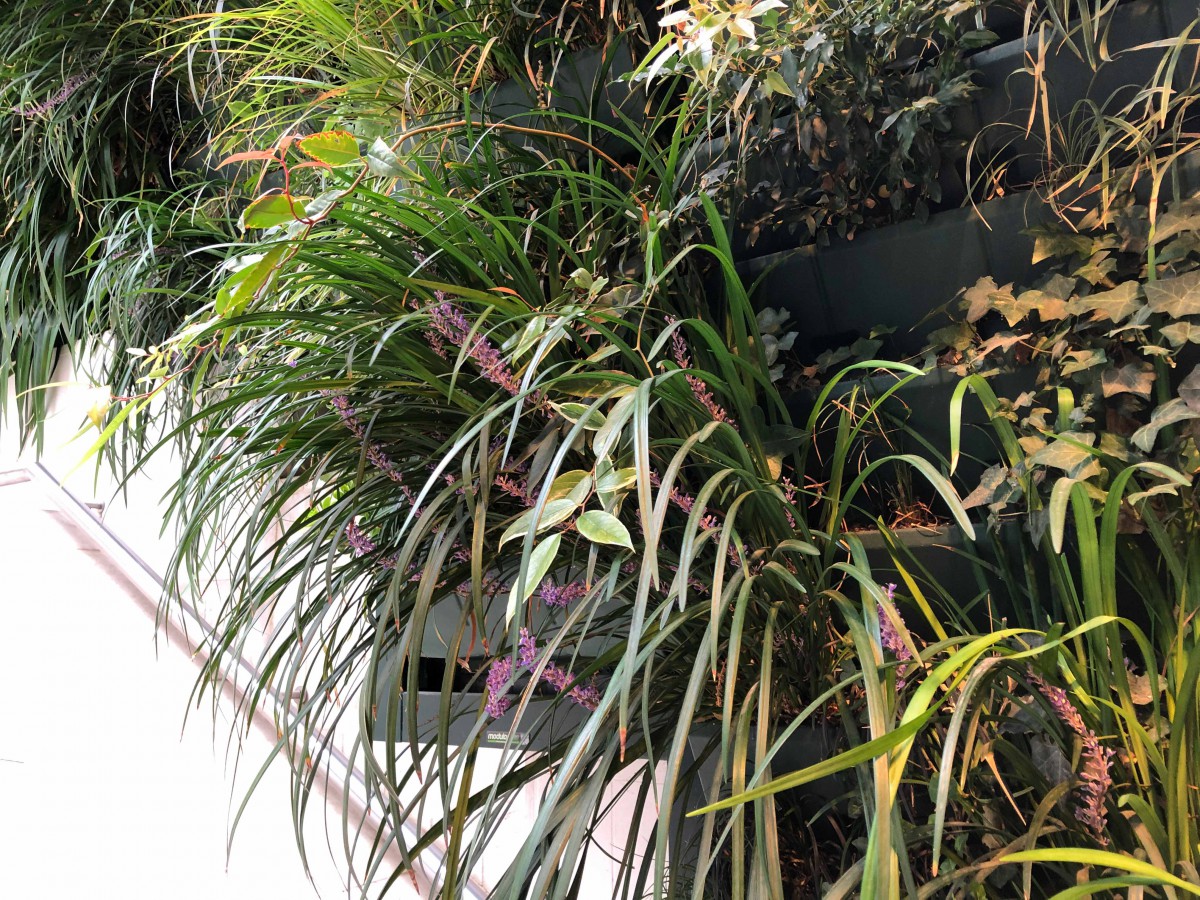
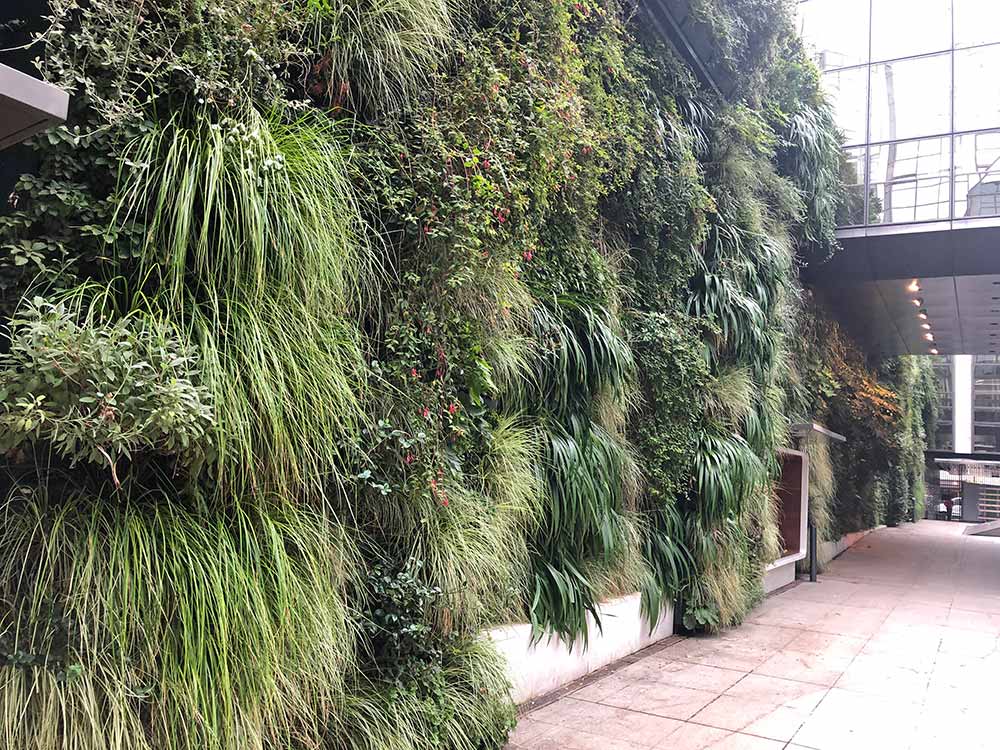
And there is much more
All pictures, including the board meeting on Wednesday at the great Jardins de Gally, the Award ceremony, the extra visits to Galeries Lafayette, the Apple Store, the wall of Patrick Blanc on Quai Branly and the garden of the Musee Branly by Giles Clement and the final diner on the boat can be found here.
